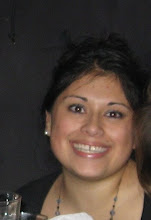Seizures are symptoms of a brain problem. They happen because of sudden, abnormal electrical activity in the brain. When people think of seizures, they often think of convulsions in which a person's body shakes rapidly and uncontrollably. Not all seizures cause convulsions. There are many types of seizures and some have mild symptoms. Seizures fall into two main groups. Focal seizures, also called partial seizures, happen in just one part of the brain. Generalized seizures are a result of abnormal activity on both sides of the brain. - National Institute of Neurological Disorders and Stroke
It begins with my head.
Soft and warm and frayed, like an old electrical cord that’s been plugged in for too long, the sensation moves under my scalp like a magnetic liquid. It dances down into my face, fills the elastic fabric of tissueswith its activity and moves into my arms and torso. At some point it shows up in my eyes and causes flashbulbs of red and yellow to go off in the dead space where I no longer see. It’s actually still just buzzing in my brain, not sparking in the orbs of flesh capped with brown corneas, but because my eyes get weird during the seizure, it feels like there's something going on in my eyes, too. Running in rivulets of electrical currents along the scar tissue where parts of my brain were clipped out, the seizure happens because of misfiring neurons, internal communications gone awry along my optic nerve, damaged and dead.
Most seizures last just a few seconds, without much harm done to the body. But anything that goes on for longer than 5 minutes is considered a "medical emergency" and should be treated.
It took me almost two years and the concern of a friend to consider my random electric activity a "medical emergency," but once I finally admitted to myself that something else might be wrong with my brain, the presence of seizures in my life became even less of a medical concern than it had before.
I went through the testing, the ups and downs of chemical effects on my brain and body from new medications, and finally in January, my body and I reached an agreement about meds.
When I left the hospital after brain surgery nearly four years ago, I vowed to remain "drug-free," meaning no synthetic substances. I didn't want to ingest a pill (or pills) on a daily basis, and the thought of some external influence controlling or affecting my life was not in the plans. But then again, neither was brain bleed and stroke that had put me in the hospital in the first place, but seizure is common after this. So In January, having found a neurologist and a plan that fit into my twenty-something lifestyle, I hopped on the medication bandwagon again, and have been rolling with it since.
I'm lucky, in that my seizures are only "partial," meaning that I don't convulse, fall, etc. With more than 3 million seizure patients in the US alone, there are so many sterotypes of the "typical" seizure patient out there, and one of the best things about sharing this information with people for the first time is the look they give me when I explain that my little yellow pill controls my seizures. I don't like being on meds, but at least they work for me.
In the May issue of Molecular Pharmacology.
The World Bank report "Investing in Health" (1993) states that, in 1990 epilepsy accounted for nearly 1% of the world's disease burden. Epilepsy commonly affects young people in the most productive years of their lives, often leading to avoidable unemployment. - World Health Organization
Click here for information on finding a doctor who can help you or a loved one (or a not-so-loved one, I don't care), or Here, for my own doc.
Subscribe to:
Post Comments (Atom)

No comments:
Post a Comment